Community Partnerships and Grants
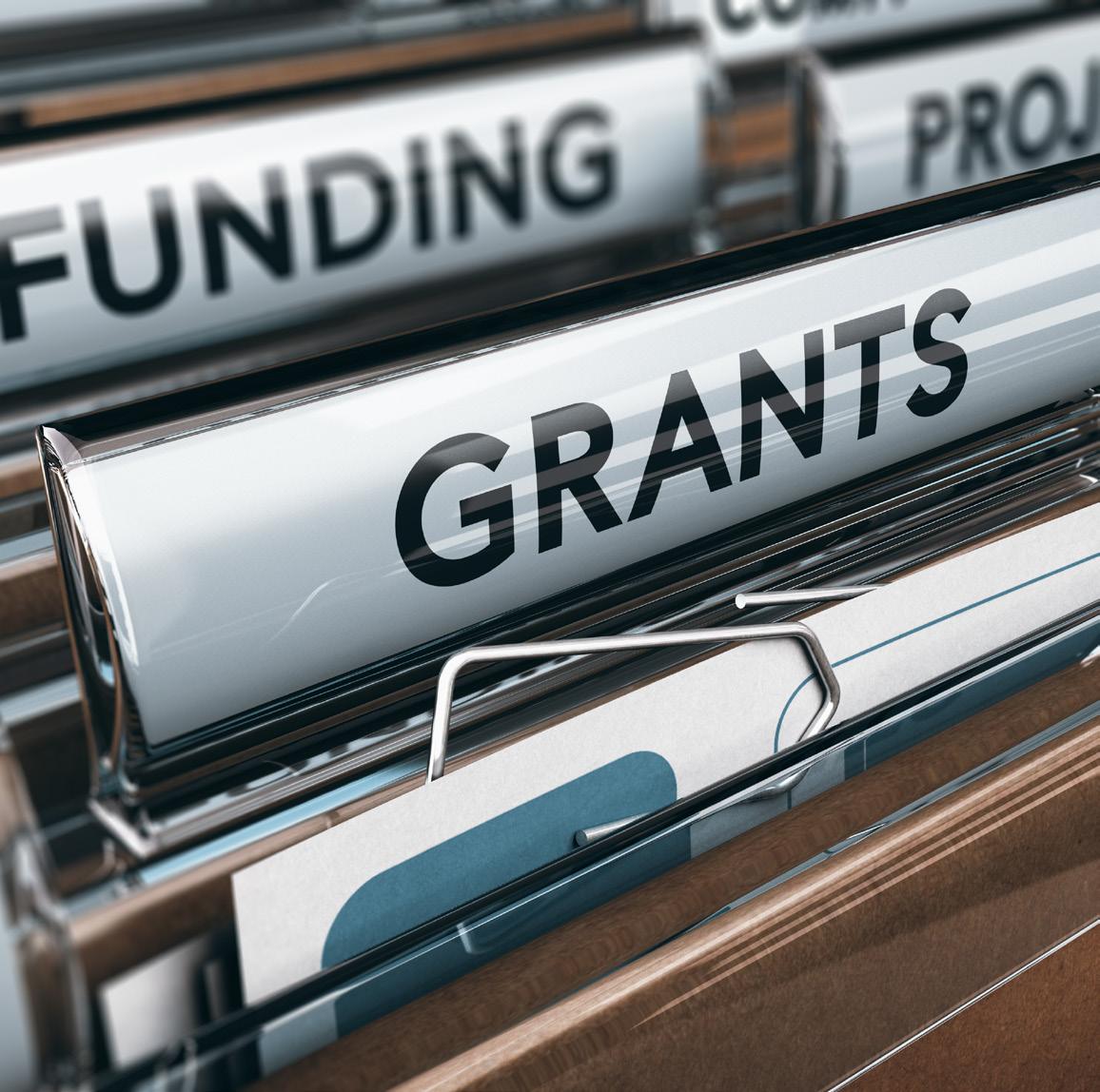
 Peo
Samuel
Peo
Samuel


 Peo
Samuel
Peo
Samuel
During September, I had the privilege to travel across Indiana to attend IASP district meetings, and Hoosier hospitality at its best was on display by district leaders and attendees. Meetings were held at schools and local restaurants and had strong attendance and quality programming ranging from self-care for leaders, school safety, internships, culturally responsive practices, grade level sharing, and the IASP update from Todd, Tim, or Tiffany. I am grateful to our district leaders for their planning and preparation to host quality meetings with relevant topics for all grade levels. If you missed your district’s meeting, there will be future opportunities. Look for emails from IASP about district specific events, RSVP your attendance, and bring a couple of colleagues with you! Networking with colleagues at the local level can build community and develop a support system as we create hope for all kids.
One topic I learned more about at the District 2 meeting was regarding Indiana’s GPS (Graduates Prepared to Succeed). Legislation passed in 2021 stipulated the creation of a school performance dashboard as a means to re-envision how school performance is strategically measured. This marks a clear departure from a single score defining student success and may also signal a potential shift away from the school grade accountability model. With input from many stakeholders, five characteristics of an Indiana graduate were established, and the State Board of Education (SBOE) is working on measures that will track progress at all grade bands. The advocacy podcast on September 23 highlighted the SBOE’s discussion on GPS and shared what data will be available to the public for each school corporation in December. If you have not listened to the podcast, reviewed the PPT slides, and watched the September SBOE meeting, I highly encourage you to do so. Principals will need to take the lead in understanding this information and translating it to district leaders and your community. Please know that IASP is “at the table” for these conversations with IDOE and SBOE and plans to provide you with timely updates in the coming weeks.
This month’s Indianagram is about community partnerships and grants. As I think about GPS, the role of community engagement regarding student success will only elevate. In fact, one of the guiding principles of GPS is to “encourage strategic partnerships among the school, community, and state leading to improved outcomes for students.” The dashboard will share a data story not only about your school but also about your community and is intended to drive conversations among key stakeholders about how students are performing in your community’s context and how they can collaborate towards better outcomes for students. When you see your dashboard, you should be asking yourself what community partners should see this data, how can it be explained, and how can they be engaged in brainstorming options to improve student outcomes.
In October, many school districts have a fall break ranging from two weeks to just a couple of days. No matter the length, I challenge each of you to set aside time to step away from your email, text messages, and Twitter feeds to rest and recharge. Taking care of yourself will enable you to take even better care of your staff, students, and families. Enjoy the Indiana fall weather and its beautiful colors!
Matt Shockley IASP President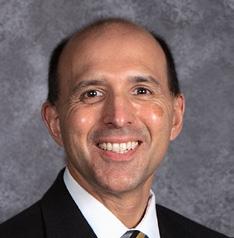
October at IASP means several things to us, one fact we know is that it means Fall Break time for you! After the rush of you starting school and us ensuring our membership and conference planning is on track, it is the time to devote rest and renewal on a personal basis. And, despite this admonition, we also know that almost all of you will still devote some amount of time to school work. It is this dedication that makes you an awesome school leader and advocate for your kids. Remember, though, an awesome school leader also has to have the energy and reserves to head into November and December, so fill up your own bucket in some way and be ready for kids and staff when you return.
Our conference planning is in great shape, and we appreciate all of you sending us your proposals to present and then registering for the AP or Fall Conference. With over 130 total proposals, this makes our concurrent sessions some of the strongest we have ever had. Please make time to register for either conference, and then make your hotel reservations to ensure you have your spot reserved to further renew and refresh yourself with colleagues in November. Each conference is linked, be sure to check out the agendas and the concurrent sessions to begin planning your schedule. As a bonus, all content will be recorded and available in the Event Owl platform for 3 months following the conferences.
On the topic of Community Partnerships and Grants, President Matt Shockley is very correct in his assessment of how the Indiana GPS Dashboard will need community understanding and input. We know that you will need to be wellversed in the Dashboard, so look for IASP to deliver further sessions to you in the coming weeks, and then be sure to attend the GPS sessions at the AP or Fall Conference. The timing of the release of data will be in late November/early December and we want you to be best prepared to tell your story.
Our best to all of you as this school year continues. We look forward to seeing you soon.
Dr. Todd D. Bess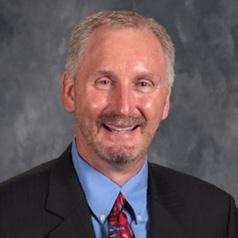 IASP Executive Director
IASP Executive Director

Cultural Responsiveness
Support Systems
2022
2023
Relationships February 2023
Safety March 2023
Data Literacy
Dr. Holly Arnold
Vice President
Aimee Lunsford
Past President
Amy Niemeier
NAESP State Representative
Dave Strouse
NASSP State Coordinator
Steve Baker
Liaison to the DOE
Dr. Daniel Peo
Assistant Principal Liaison
2023
Social Media May 2023
Best of 2022-23
2023
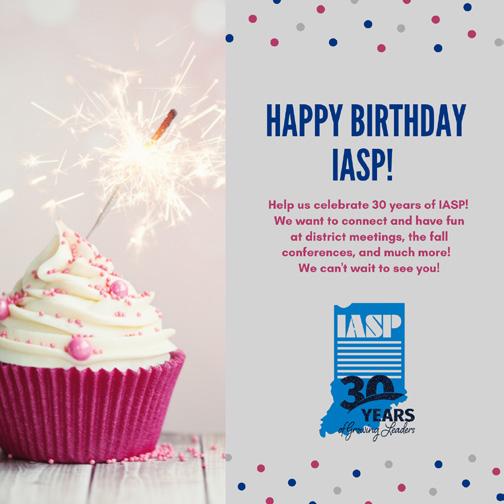


 Dr. Katie Jenner Indiana Secretary of Education
Dr. Katie Jenner Indiana Secretary of Education

As I thought about this month’s message, focused on community partnerships and grants, I couldn’t help but reflect on a recent conversation with a former educator. If you had a chance to catch the latest episode in the Teachers Who Shaped Us video series, you got a glimpse into part of this conversation, and today I’d like to reiterate an important message shared by Dr. Allison Barber.
In talking to Dr. Barber, current president and chief operating officer of the Indiana Fever, she shared that one of the greatest pieces of advice she received as she began her career as an educator was to “say yes as often as you can to your students.”
In the context of K-12 education today, this simple phrase can have so many meanings…from a teacher saying yes to a student who shares big dreams for their future…to an administrator saying yes to an outside-the-box idea to improve student outcomes in their school…to a business saying yes to a new partnership to offer a work-based learning opportunity for local students… to a state saying yes to a number of big bets to move the needle for students and provide increased flexibility for local educators to do what they do best.
As we seek to make a positive impact for our students, by starting with “yes” in all of these scenarios, and bringing
everyone to the table, we are able to leverage our collective expertise and experiences to learn from one another, make improvements, and ultimately, find the best solutions for students today and in the future. Whatever the partnership may be, we know we can do more for our students when we band together… and when the bold, collaborative work happening at the local level is both elevated and supported.
As many of you know, last month we came together with partners from across the state to recognize some of Indiana’s most impactful educators and school leaders at the state’s first Educational Excellence Awards Gala. In addition to sharing their positive work on a state stage, IDOE also provided up to $4.6 million in ESSER grant funding to advance this important work as well as mentor other schools to drive additional, innovative strategies.
This includes awards for excellence in areas including STEM, early reading, work-based learning, and postsecondary credential completion, including CTE credentials. We also presented grants to school corporations that are making significant progress toward improving achievement among Indiana’s Black and Hispanic students, students in special education, students whose primary language is not English, and students from low-income households.
These grants will be used to sustain and expand the school’s current, impactful programming, support teachers who lead this work, as well as mentor other schools to drive additional, innovative strategies through a community of practice.
Each and every day, our educators are changing the lives of students, and the ongoing support and collaboration of those outside the school walls is an essential part of this continued work. Our team at IDOE is committed to providing our schools and partners with access to high-quality grant opportunities that challenge the status quo and create a lasting impact for all Indiana students. Together, this is our shared charge…to put our foot on the gas pedal and ensure we do all that we can to propel our students forward… whether that’s through additional grant funding to support local initiatives to expand career exploration, engagement, and experiences, to measure skill development, or to attract and retain educators, just to name a few.
As the world around us continues to evolve, our Indiana schools are in a pivotal position to form lasting partnerships that prepare our students to seize the countless opportunities that lie ahead. Thank you for your work and commitment to our Indiana students!
Indiana Learns is a statewide grant program for Hoosier families that provides funding for math and reading enrichment to occur outside of the normal school day.

School corporations can help eligible students get the most out of their Indiana Learns accounts by supporting them in two ways:

These schools have qualifying families that are actively using Indiana Learns accounts In addition, Champion Schools may offer on site math and reading engagement opportunities outside of school hours to qualifying students

Corporations can work with eligible families to leverage student funds to support the delivery of qualified expenses.
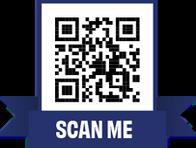
School corporations will have the opportunity to maximize student accounts by contributing $250 per qualifying student If this is done, the state will match the funds with an additional $250
Students enrolled in schools or corporations making the match will be able to access $1,000 in funds
Corporations interested in committing to a match or learning more about the program should contact Seana Murphy at smurphy@indianalearns.org.




As a new assistant principal, one of the most important things I learned early on during my experience was the importance of leveraging the many resources that are available for my students and their families. I’m sure that we all could sit down and make a long list of the partnerships that exist between our schools and community organizations that are meant to help serve students. This fact-finding mission, I believe, is a part of our trial-by-fire assistant principal experience that often is overshadowed by discipline and other duties. Truly effective assistant principals are able to recall these partnerships at key times to help families, whether those families are in crisis or in need of additional support. I am not an expert on the many resources we have in Avon as this is my first year here, but I am quickly learning that we have plentiful resources and partnerships! This month, I’m going to take time to explore some of those resources in a general way that you might be able to think through for your specific context.
To start, first begin by seeing if there is an organization that curates all of these resources for you. Work smarter, not harder, right? In my last experience from the Lafayette area, I had the fortune of referencing a community resource guide that was assembled by Bauer Family Resources. From their website, Bauer describes itself as a “private, non-profit organization [that is] governed by a volunteer Board of Directors that is responsible for setting the strategic direction of the agency” with a vision of “[being] a transformative service provider for children and their families” and a mission of “[empowering] children and their families to thrive.” This, to me, is the heart of what we are seeking with community partners to support our students and families. For reference, the 2022 Community Resource Guide is linked here. As you are identifying community partners that already exist or gaps in support that your school needs to address, please consider the following categories from the Bauer resource guide:
Depending upon the context in your community, there may be other categories that emerge. With the ongoing opioid crisis that we so often hear about, addiction support may be another category to consider. You may also seek out resources to support LGBTQ+ students and their families. Once you identify the needs you are experiencing, it becomes that much easier to begin to identify resources to support those needs. Charles Kettering, former researcher for General Motors, stated that “a problem well-stated is half-solved.” For us as school leaders, maybe a variation on this could be, “a problem well-stated is an opportunity to seek out a community partnership that is well-suited to help.” As you seek to identify those resources, remember that knowledge of these partnerships likely already exists in your district. In my experience, seeking out my school counselors has often resulted in a great deal of learning for me. Central Office staff in a student services or other department may also have knowledge of existing partnerships.
It takes extra effort to pursue these supports for families, so THANK YOU for your leadership in this way. If families knew these resources existed, they may have already sought them out. Schools continue to serve many needs, and thankfully, connecting students and families to community resources is a very attainable goal and practice. Once you learn about partnerships, consider cultivating relationships with the individuals involved! You will be glad you did!
Dr. Peo can be reached via email at depeo@avon-schools.org.


Strong connections with community partners have been one of our keys to success at Wes-Del Elementary School. Establishing, maintaining, and growing these relationships is an ongoing process that does take time and effort but ultimately pays off for our students and staff alike. Our partners include local businesses, churches, universities, and other organizations which allows our school to thrive in different areas including food assistance, tutoring, childcare, career exploration, and more!
Starting in the 2021-22 school year, our school was in need of a better system for Latchkey services. We reached out to a local church about hosting the program at their site instead of us having it at the school. This was a big change from what had been done in the past. The partnership with the church was a huge success and was a win-win for both entities. This was a win for the school as it allowed us to free up much needed space in the building after school and no longer required us to fill the supervision positions. It was a win for the church as they were able to partner with additional area resources that provide students with free tutoring, food, haircuts, and more.
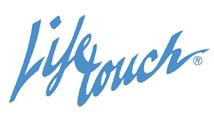
Another area where community partnerships have paid off is with our STEM programming. Upon adding

STEM into our related arts rotation, we found that additional assistance would be helpful. We reached out to Purdue University and applied for an IN-MaC grant which helped us outfit our new lab with equipment and curriculum as part of their design and innovation studio initiative. This grant bolstered our student experience to a new level. We then found additional community partners that could help with making real world connections. One such partner is Jennerjahn Machine located a few miles away from our school. Jennerhahn is able to have some of their engineers and technicians come to our school to speak with classes, review and provide feedback on student work, and make real-world connections about activities in the classroom to those in the industry level. This partnership is creating a local pipeline from school to workforce by the two entities working together with the school and thus meeting the needs of a local industry. Even better, it can allow our best and brightest students to be invested in their local community and stick around after graduation. Mark Rodgers, an employee of Jennerjahn Machine and frequent contributor to our school shared that, “Jennerjahn Machine is a custom machine manufacturer, where we employ various STEM disciplines including Mechanical and Controls Engineering, Machinists, Welders,
and Assembly Technicians. We are proud to partner with Wes-Del’s STEM education program, so we can help the next generation of students in our community gain skills for future STEM careers and provide insight into what current industry looks like and what we would be looking for in an employee.” We envision this and other such partnerships expanding to our middle/ high school in the very near future and are excited to see the outcomes.
These are just two of many examples of community partnerships that have been true assets to our school. We are currently reaching out to additional partners as well, to continue to grow our experiences and opportunities for students.
Join us for this episode of the IASP LeaderCast. A weekly podcast production containing short, sweet nuggets of Wednesday Wisdom for our leadership growth. In this episode, we meet Matt Shockley, Principal at Avon High School and the new IASP President!
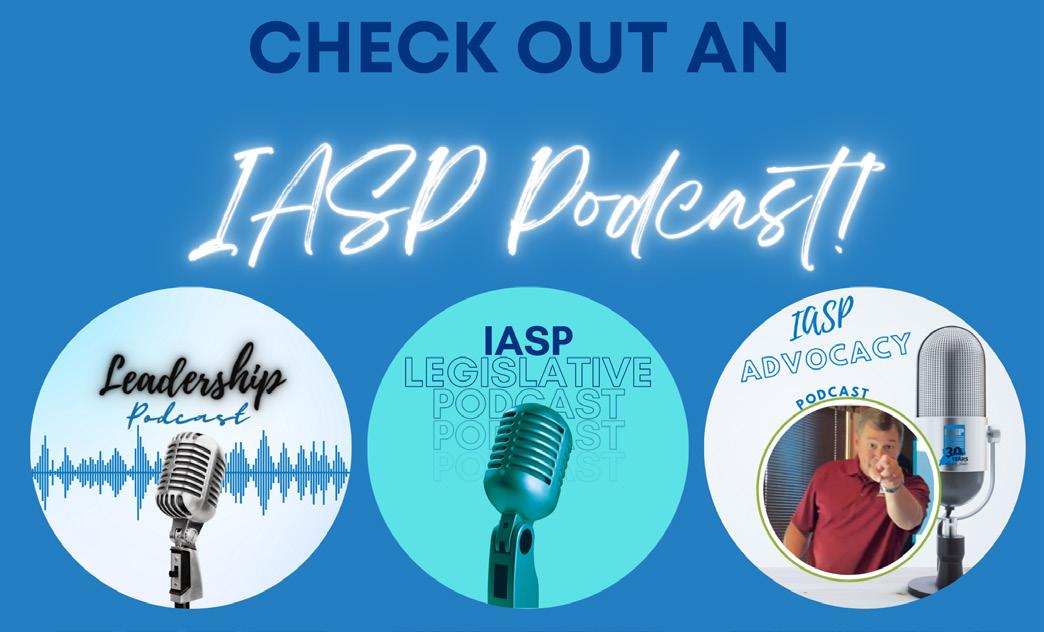



Following the passage of House Enrolled Act 1514 in 2021, the IDOE has rolled out a rather intimidating list of accountability criteria that will be used to measure school performance for the 22-23 school year and beyond. I use the word “intimidating” because the list includes characteristics that are not easily measured, including vague characteristics such as college and career readiness, communication and collaboration, and limitless financial and digital literacy. This formidable list of intangible characteristics is falling on schools already struggling with packed curricula and personnel shortages.
The current accountability model became more clear when Indiana administrators received guidance on September 21 from the IDOE containing more specific information regarding the appearance and structure of the Indiana GPS dashboard, as well as examples of headline indicators and data sources. Administrators are now asking themselves, “Where does ‘college and career coursework’ and ‘credentialing’ fit into our typical school day, and what does it look like in our classrooms?” Difficulty in implementation aside, I - as many administrators - believe these accountability characteristics are valuable skills that are necessary in preparing learners for lifelong success and are a step in the right direction in evaluating our schools beyond a test score.
In an attempt to meet the newly established IDOE accountability indicators, I want to take this opportunity to share what we are implementing at Milan High School for the 2022-23 school year in an attempt to meet and exceed the skill set necessary for our students to be successful after graduation.
First, I need to give you some insight into our current bell schedule and structure. We have carved out a 30 minute block in our school day that meets four days per week. This period of time is known as “Graduation Prep” (GP) and has been in existence for several years. GP is also known as Homeroom, Activity Period, or SRT in many of your schools. Our students are assigned a GP teacher during their freshman year, and they remain with that teacher for all four years of high school. We hope that our students build a counselor-type relationship with their GP teacher, as our administrative team considers our GP teachers our first line of defense for student SEL and counseling needs. We encourage our GP teachers to check in on students daily and notify our counseling department of any “red flags’’ that need attention. Our goal is that every student at Milan High School graduates with a plan for life after high school, and our Graduation Prep class is a big part of making that happen.
In the past, our GP time has been used for grade checks, homework help, CCR curriculum (via Naviance) and activity meetings. Our GP class time continues to improve year by year as we make the time more productive and practical for our students. Our team, composed of counselors, administrators and teachers, spent the spring semester and summer months collecting a list of resources and building a curriculum to implement for the 22-23 school year to meet our school’s goal of all students graduating with a plan while also attempting to meet the requirements of the Indiana GPS dashboard indicators. Some of the new topics we plan to integrate into our GP classrooms this school year include the following:
Grades 9 and 10
■ Digital Citizenship
■ PSAT Prep
■ Mentoring/Character Education
■ Email Etiquette and Organization
■ Google Suite Skills and Organization
■ Study Skills
■ SEL Skills
■ College Visits
■ Workplace Tours
■ Alumni Speakers
Grade 11 and 12
■ Financial Literacy
■ SAT Prep
■ Mentoring/Character Education
■ College Search
■ FAFSA Completion
■ ASVAB Prep
■ Resume and Interview Skills
■ Paying for College
■ Voter Registration
■ SEL Skills
■ Alumni Speakers
You might be thinking, “This sounds great in theory, but how do you intend to implement all of these topics?” First, we have reached out to our community resources to capitalize on their expertise while also building relationships with
them and showcasing our school. We have a list of bankers, law enforcement, military, HR personnel, retired teachers, religious leaders, alumni, etc. that we have contacted about specific topics that our GP team brainstormed. We have invited these community members to create lessons and bring their real life experiences to emphasize the practicality of these topics.
To assist with this, our team has created a lesson plan template that all GP lessons are created on for each specific topic. This gives structure to each lesson and helps with time constraints. The lesson plans are then presented to our GP teachers during our weekly PLC time so that everyone has a full understanding of the lesson. GP teachers then present the lesson to the students on a specified date so that the entire grade level gets the same lesson on the same day. We began using this method last spring, and our staff has been very receptive to the idea. They appreciate that the lessons have been created for them with easy access to necessary resources. They also feel confident in presenting the lessons, as they have had time to preview the lessons and ask questions prior to presenting it to students. In some cases, after a lesson has been presented, we then ask the expert or community member to come in and talk to the students to reinforce the lesson that was just presented.
Our college and career curriculum received a boost this fall when we were informed that Milan Community Schools were recipients of the IDOE Employability Standards Innovation Implementation Grant. The grant funds are allowing us to add personnel and programming for the 2022-23 school year to better meet the needs of our school and community, including plans to expand our GP resources to address attendance issues, as student attendance is a headline indicator, and support academic needs, as strength of diploma, SAT performance and graduation pathways completion are also all headline indicators.
Milan is already working on plans to implement a cohesive k-12 curriculum at Milan Community Schools that encourages all students to highlight their coursework throughout their educational careers. We have titled this the “Milan Fab Five” and are envisioning a digital portfolio where students can display the many ways they meet and exceed the college and career readiness standards as they progress through school. This project would culminate with a senior presentation to a panel of educators, parents and community members prior to graduation that demonstrates student competency and preparedness for life after graduation.
It remains to be seen if our strategy will work, but I am excited about the potential that this curriculum brings for our students. Community members are excited to be involved and believe these are worthwhile topics that are often overlooked. Moving forward, our team is considering offering credits for completion of the work during GP that may be necessary to help motivate students if they are hesitant to complete work without receiving a grade. To any fellow administrators interested in learning more about our current and future plans, please don’t hesitate to reach out.




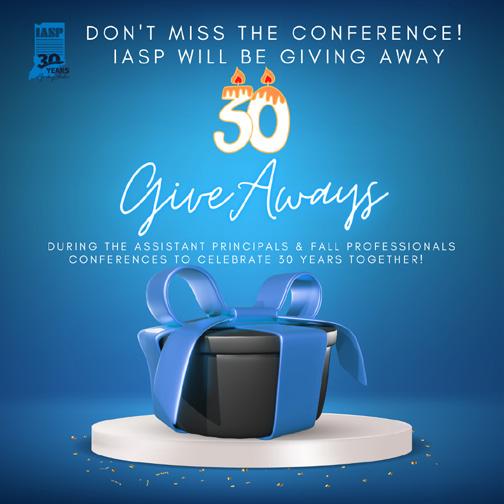


A grant is a financial award given to an organization with no expectation for the payment back; therefore, a grant is a favorable approach for schools to raise funding for initiatives that serve an impactful purpose. Examples of grant awards may be to purchase school supplies for students, cover field trip costs, provide professional learning for teachers and staff, add new playground equipment, purchase new curricula, or even build an entirely new building on the school campus. However, grant writing often comes with understanding a new language of grant writing terms. If you are new to grant writing, we would like to share the top 12 grant terms you should know.
Grantmaker/Grantor- The grantmaker is the organization tasked with disseminating grant funding. Grantmakers are typically foundations, corporations, and government agencies. Examples of grantmakers include the Lilly Foundation, Target, Ben + STEM, Techpoint Foundation for Youth, IN-Mac, and the Indiana Department of Education
Request for Proposal (RFP)- When a grantmaker has funding to award to another organization, they often send out an RFP on their website, newsletter, or other communicative platforms. The grantmaker usually provides the following information within the RFP:
- Name of grantmaking organization

- Name of grant
- Purpose of available funding/mission of the grantmaker
- Targeted populations
- Eligible applicants
- Application due date
- Total award available
- Timeline
- Contact information
Grant Officer/Grant Manager- The grant officer is the point of contact at a grantmaking organization. They can be a helpful resource if you have questions or need assistance. Awardee/Grant Recipient- The awardee is the school or educational organization that receives the funds from a grant to pursue an initiative. The awardee is typically a 501(c)(3) organization and not an individual or for-profit business (though exceptions exist).
In-kind matching/in-kind funds/In-kind donation- This is a portion of the initiative that will not be paid for by the grantmaker. Some of the funding for the completion of the initiative will come from another source. For example, an educator applies for a $500 grant for a hydroponics garden from a local community foundation. The hydroponics system ultimately costs $750. The PTO has agreed to designate an additional $250 toward the purchase of a hydroponic system if the school is awarded the $500 grant. The grantmaker awards $500 and the PTO matches $250- totaling the $750 needed to purchase a hydroponics system.
Project Period- This is the period of time that the funding is available and the initiative’s start and end date. This timeline is after the awardee receives the grant funds and needs to spend it within a certain amount of time. It could be six months, it could be a year, it could be three years, it depends on the grantmaker and their expectations for how long the funding period is.
Principal Investigator- The individual(s) assessed by the grantmaker to have the appropriate authority and responsibility to direct the initiative supported by the grant. This is the person who is going to be accountable for the initiative to make sure it is managed well and initiative goals are reached.
Letter of Intent/Letter of Interest- The Letter of Intent is sometimes requested by a grantmaker; it is a letter written by the school applying for the grant to the grantmaker, informing them of the upcoming proposal submission.
Letter of Inquiry- Some grantmakers prefer a Letter of Inquiry prior to submission of a full grant proposal. A Letter of Inquiry is a brief summarization of the initiative idea and questions the grantmaker “Would you be open to learning more about this?” If the grantmaker is interested, then the school would submit a full grant proposal. If the grantmaker is not interested, then the school saves time by not submitting the full proposal of that particular initiative (and can either look elsewhere or modify the initiative idea and send a new Letter of Inquiry).
Grant Budget- The grant budget is the detailed monetary plan of how the grant award dollars will be designated to support the initiative.


Subaward- a subaward is when there are multiple people or organizations involved in the initiative. For example, a school is awarded a grant of $15,000 to build a greenhouse. From this initial award amount, $3,500 will be subawarded to a gardening nonprofit partner to design the space, provide training for the teachers on equipment use, and measure student performance outcomes. In this case, the local gardening nonprofit is the subawardee.
Indirect Rates- Grantmakers understand that when they award a school with funding, they are not reimbursing the school for all related costs to fulfill an initiative. Schools still need funding to heat the building, keep the lights on, pay salaries, etc. Because of these additional costs to simply keep a school running, some grantmakers allow the school to request a percentage of the grant award to be designated towards these types of costs, referred to as indirect costs. Let us say a grantmaker allows a 10% indirect cost to be requested. That means $500 of the $5,000 can be used for keeping the school building running. If a grantmaker does not specify allowance for indirect rates in the RFP, the grant proposal writer can ask.
Conclusion: Awarded grants can positively impact the school environment and students’ lives. If you are new to grant writing, we hope this list of top 12 terms provides a brief but succinct overview that will support your program. If you need grant writing help, reach out to us!
Infinite Capacity is dedicated to inclusively fostering personal and professional growth for educators, leaders, and community partners through innovative educational practices. Consulting services are available for school and district-level support. Please e-mail us at contact@ infinitecapacity.com for more information. Our book, Leadership in Integrative STEM: Strategies for Facilitating an Experiential and Student-Centered Culture, is available at Amazon, Barnes & Noble, and Rowman & Littlefield.

Partnerships between schools and community organizations have the potential to yield short- and long-term benefits for students’ social, emotional, and academic development. Most notably, these partnerships can leverage learning opportunities that dovetail with each other in and outside of the school’s walls through inquiry, problem-based learning, or service learning. Learning in this way can create a foundation for application and culturally relevant instruction, which further enhance student interest and engagement in school and school-related outcomes.
The term “community” might seem too broad for someone who wants to forge relationships with community members. Where is the community? Who is the community? Community groups include businesses, universities, faithbased organizations, cultural groups, volunteer organizations such as the United Way, senior citizen groups, public libraries, museums, or other groups that serve a need in the community and whose interests could align in service of schools.
Some essential elements for mutually beneficial partnerships include:
■ Leadership and decision-making teams that include school and community stakeholders. In rich partnerships that value diverse voices of community members, a saying that is often said is, “Nothing for us or about us, without us.” Planning in a bubble (a few people within an organization) can sometimes feel efficient but it is antithetical to collaboration. Avoid the temptation to plan without including the perspectives, strengths, and goals of your partners in your decision-making. As the Reform Support Network (2014) asserted, “The purpose of community engagement is to ensure that school improvement is done with the community, not to the community. It recognizes how integral schools are to their communities, and how much parents and communities have to offer as partners when fundamental change must occur in schools” (p. 3, italics original). Further, the leadership team ought to consist of representatives from each organization.
■ A co-constructed vision that includes common language.
■ Clearly stated goals for ongoing learning for all partners involved. Learning activities should elevate students’ opportunities to engage with real-life experts and facilitate application to their lives in authentic contexts, and/or engage students through service learning. Goals should be centered on these important outcomes.
■ A clearly articulated plan of action and sustainability. What are the people who are at the table supposed to do? How will they know? What are roles and responsibilities? Who is facilitating communication between organizations?
■ Clear identification of point people for shared
responsibility and task completion. Confusion can be the death-knell of collaboration! For example, articulation of responsibilities for coordination between schools and community organizations that directly serve students for activities is particularly important so that confusion about when services are offered, program supervision, and communication with families is limited.
■ Clear benchmarks and assessments for goal attainment and areas for improvement.
■ Communication among the team and discussion of successes and steps to address areas for improvement. Ensure community and family voices are included in these conversations.
Two examples that illustrate a total commitment to schoolcommunity partnerships are a) community schools and b) the city-wide Whole Child initiative in Tacoma, Washington. First, community schools engage partnerships between nonprofits, businesses, and public services to provide wrap-around services for students and families. Examples of such services include family dental care or mental health services that families may access in the physical space of the school. This transforms schools into community hubs, or, as is often the case in rural communities, enhances schools’ existing roles as community hubs, by offering increased coordinated services, where students and families are supported by community partners for increased health, well-being, college and career readiness, and school engagement.
Second, the school district of Tacoma, Washington is a longterm collaboration between the district, the mayor and city council, health and human services, parks, and organizations such as the Boys and Girls Club, the Urban League, and the YMCA, who collaborate with community members to provide learning opportunities and wraparound services during and after the school day.
A city-wide school-community collaborative initiative is no doubt, a complex process that requires dedication and the commitment of a plethora of human and material resources. If you find yourself on the opposite end, just starting out, start with one. Just one partnership with one willing organization can be the beginning of life-changing relationships and opportunities for the students you serve.
References
Olson, L. A. (2018). School-community partnerships: Joining forces to support the learning and development of all students. Aspen Institute https://files.eric. ed.gov/fulltext/ED585606.pdf
Reform Support Network. (2014). Strategies for community engagement in school turnaround.
Roche, M. K., & Strobach, K. V. (2019). Nine elements of effective school community partnerships to address student mental health, physical health, and overall wellness. White Paper. https://files.eric.ed.gov/fulltext/ED593295. pdf
Sanders, M. G. (2005). Building school-community partnerships: Collaboration for student success. Corwin Press.
Willems, P. P., & Gonzalez-DeHass, A. R. (2012). Authentic contexts to academically motivate students. School Community Journal, 22(2), 9-30.
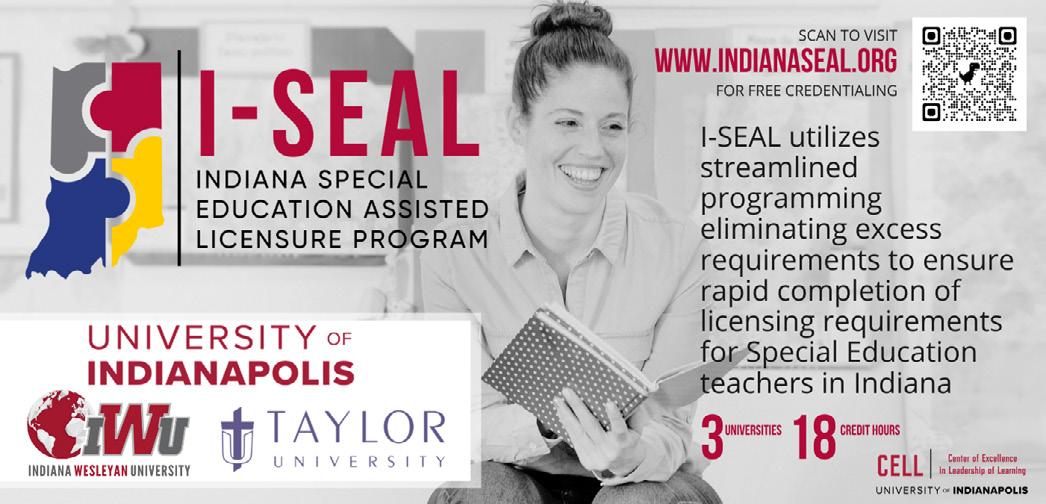
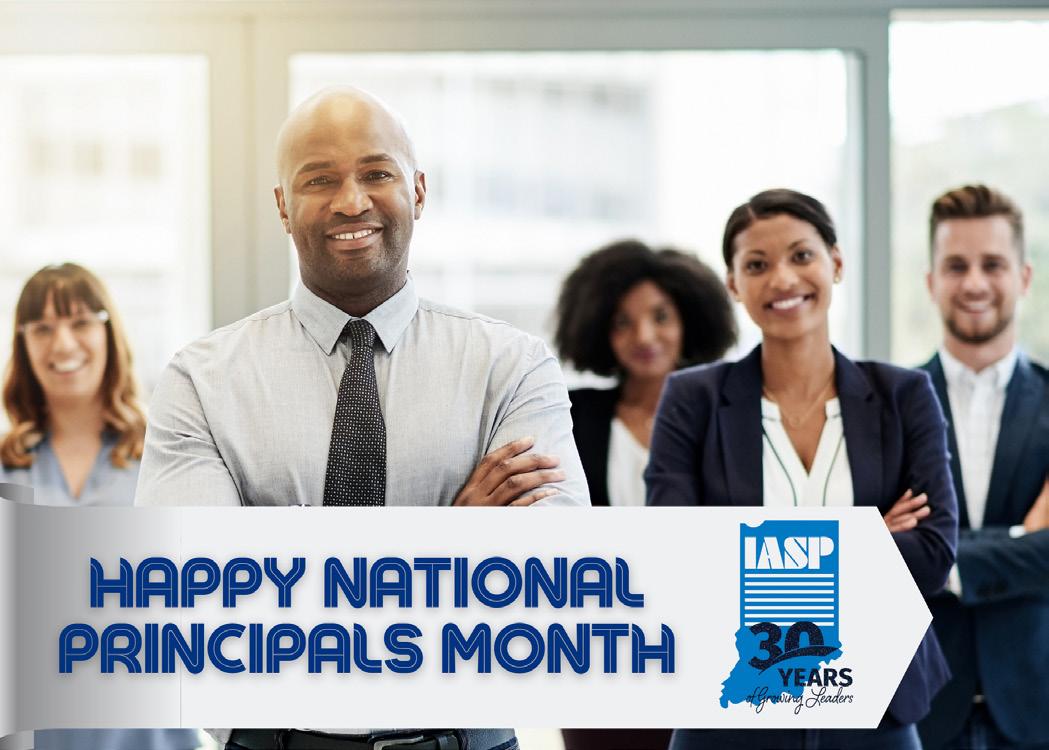

IPLI is a premier professional development opportunity for the practicing principals of Indiana. We support, encourage, and provide growth in your leadership as we learn together, lead together, and connect.

The Indiana General Assembly created IPLI in 2013. The Indiana Principal Leadership Institute (IPLI) is a byproduct of a bipartisan effort to strengthen education in our state by focusing on school principals and increasing their leadership capacities. What was once an idea in an Indiana State University {ISU) conference room in 2010 was voted into legislation after three years of collaborative work with state legislators and the Indiana Association of School Principals.
As the national rhetoric around school improvement continued to center on principalship, discussions here in Indiana focused on the lack of high-quality professional development for school leaders. In 2010, the PK-12 faculty in the Department of Educational Leadership at Indiana State University and Dr. Todd Bess from the Indiana Association of School Principals began exploring ideas to create a new professional development program for practicing principals. Led by Dr. Steve Gruenert, the team, consisting of Dr. Ryan Donlan, Dr. Terry McDaniel, Dr. Todd Whitaker, and Dr. Bobbie Jo Monahan, created a draft conceptual model for a two-year institute. Working with the Dean of the Bayh College of Education, Dr. Brad Balch, they reached out to university personnel with their idea. Greg Goode, ISU’s Government Relations Executive Director, then began to share the proposal with various legislators during the 2011-2012 legislative sessions
On May 11, 2013, SB 402 was signed into law by then-Governor Mike Pence, creating the Indiana Principal Leadership Institute. Indiana State University was awarded the role of a primary agent of the institute. IPLI held its first Summer Seminar on July 17-18, 2013, on the campus of Indiana State University. Fifty-six principals and eleven mentors were members of this first cohort.
IPLI continues to be funded by the Indiana Legislature, and in the summer of 2022, it started its tenth cohort. IPLI has provided an intensive two-year professional development program to 552 principals. Over 850 teachers have participated in year two with their principals, and IPLI has directly impacted over 324,554 students and 22,458 teachers.
Through a continued partnership with the Indiana Association of School Principals and the Indiana Association of Public School Superintendents, a two-year program for new school administrators was created in 2014 - the Indiana New Administrator Leadership Institute (INALI). Over 560 new school leaders have participated in this program. IPLI and INALI are creating an aligned system of leadership support for Indiana deans, assistant principals, and principals.
Key partnerships with our professional organizations and Indiana legislators like State Reps. Bob Heaton (R-Terre Haute) and Alan Morrison (R-Terre Haute), who co-sponsored the legislation in the beginning, continue to support the vision and mission of IPLI. Another key partner has been Indiana State University’s educator preparation programs. ISU School of Education has long been distinguished by its close collaborative relationships with its K-12 partners, said Bayh College of Education Dean Brad Balch. He added that the Indiana Principal Leadership Institute offers a unique opportunity to deepen the partnerships and strengthen the commitment to the college’s K-12 partners.
IPLI Extended is a formal, year-long, intensive professional development program for IPLI alumni. Extended allows participants to dig deeper into topics covered during the IPLI experience and beyond. In addition to three-day-long seminars, alumni may meet in regional focus cohorts throughout the state (August, October, and February via Zoom). Topics vary yearly so that alumni can enroll in Extended multiple times. IPLI Extended participants are encouraged to bring teacher-leaders to the seminars when appropriate. This year’s theme is “Leadership in Times of Change,” which feature the following speaker for January 2023: Dr. Mike Ruyle from Marzano Research.
The September speaker, Doug Noll, worked with the IPLI Alumni on Affect Labeling, which assists in de-escalating emotions. He has also provided follow-up Zoom meetings so the group can continue to practice calming conversations when needed.
IPLI Alumni also have the opportunity to experience the School Leader
Paradigm Micro-Credentials program. Alums who wish to dig into this opportunity should reach out to Dr. Todd Bess or Tiffany Barrett at IASP to begin the process. Micro-Credentials are an excellent opportunity to extend your learning through your personal leadership lens and connect your first-year IPLI experience to the present.
We have openings for IPLI alumni to join us for the January seminar, work with an outstanding facilitator and be in-person learning together. The January Seminar will be held at the IASP Office in Indianapolis. Go to https://www.indianapli.org to complete the application.
We look forward to continuing to provide resources and updated skills and tools for school leaders in Indiana.
of
Ball State

“This master’s program taught me to think like an administrator.”
Jeremy Coleman Ball State Alumnus

The birth month of Riley Hospital’s namesake always sends me to my bookshelf for my fat volume of The Complete Works of James Whitcomb Riley to search for some timely treasure to share. A beloved celebrity in his day and now not even worthy of his own state education standard, Riley’s Hoosier dialect still evokes thoughts upon which to ponder and simple moments worthy of celebration. Here is the final stanza of Mr. Riley’s Old October.
Can’t tell what it is about Old October knocks me out!I sleep well enough at nightAnd the blamedest appetite Ever mortal man possessed,Last thing et, it tastes the best!Warnuts, butternuts, pawpaws, ‘Iles and limbers up my jaws
Fer raal service, sich as new Pork, spareribs, and sausage, too.Yit fer all, they’s somepin’ ‘bout Old October knocks me out!
Pandemic lethargy step aside because Indiana K-12 students and school staff are excited about and busily working to raise funds to benefit the children and families who need the care provided through the state’s only nationally-ranked, comprehensive children’s research hospital. Closing in on nearly $40K raised in the first months of the 2022-23 school year, Riley spirit weeks, Tackle Childhood Cancer initiatives and classroom philanthropy project gift totals predict another banner year for Kids Caring & Sharing engagement which equates to hope and healing for Indiana’s sickest and most seriously injured children. Online giving pages that can be shared through school communication, email, and social media sites are growing in ease of creation and application. QR codes made for school team and individual fundraiser pages take donors directly to the page with just a click of mobile phone camera, eliminating the need for kids to handle cash – and an “I don’t have any cash on me” response to an invitation to join school fundraising efforts. This is a great way to reach out to out-of-town family and friends!
A statewide online giving campaign is set up and ready for schools to create, personalize and share their passion for helping Riley kids. Give it a try!

■ Trunk or Treat activities are a popular Riley fundraiser this month with high school and middle school clubs/teams or school PTOs hosting safe activities for students from elementary schools. Check out the KCS program guidebook for more seasonal fundraising ideas https://www.rileykids. org/ways-to-fundraise/kcs-guidebook.pdf
■ National Extra Life Game Day is Saturday, November 5. If your school is participating in the new IASP Esports Bowl this year, why not incorporate philanthropy into your program and register your school’s Esports Team in the national Extra-Life initiative? There is no registration fee for Extra Life Classic participation, just set your fundraising goal and select Riley Hospital as the Children’s Miracle Network Hospital you wish to support. Indicate that you would like to share your contact information with your hospital or name your school somewhere in your team name so that your participation is counted within your school’s 2022-2023 KCS participation. https://www.extralife.org/
■ Happy 30th IASP! Join your fellow IASP members in celebrating 30 years of advocacy, education and support from your statewide professional association. Demonstrate your support during the Assistant Principals’ and Fall Professionals’ Conferences in November with a $30 gift to Riley Hospital, the IASP’s state charity of choice. Look for a special QR code in next month’s Indianagram and in the conference program. Just aim your mobile camera at the image and follow the prompts to make your gift. Visit me during the conference at the Kids Caring & SharingTM table, show me proof of your gift, and get a snazzy birthday ribbon you can add to your conference name badge!

■ And don’t forget that your school can sponsor a Riley Red Wagon with a cumulated $4,000 gift. Your school personalize the message on a special license plate for the back of the wagon, and receive a duplicate plate to display in your school. I will even bring a representative red wagon to your school to present your license plate!
If you need a new KCS recognition plaque, do not receive a 2021-2022 participation decal, or have any questions, please contact me at SMiles@RileyKids.org
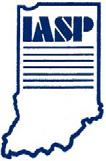
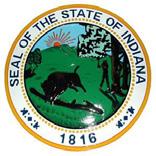




Title I, ESSER and School Safety grants are just a few of many grant opportunities that are available to schools. Some of these funds have become a bedrock to education funding, while others serve as incentive-based bonuses or perks that may not have been built into the budget. With such a wide variety of grant opportunities through all levels of government, tracking opportunities and/or compliance can become unmanageable for schools. And while staying abreast of the granting funding available may seem daunting, doing so can really make a difference in efforts towards implementing innovative programs, supplementing budgets, expanding unique learning opportunities and providing critical resources to students. In this legal brief, we will cover the essential elements of an effective and efficient approach to obtaining grants.
Identifying Available Grant Opportunities. The Indiana Department of Education (IDOE) aims to assist schools in utilizing grant dollars to strengthen education programs statewide. In this effort, they have a page dedicated to State and Federal Grant Programs. That information can be accessed here. If your school has not already done so, review the grants identified by the IDOE and earmark those that your school may be interested in applying for if they have not done so already. With each grant program comes a potentially strict set of deadlines, so it is best to review this first in case there are upcoming deadlines for these funds.
While the IDOE has a list of 20+ grants that they endorse and assist schools with compliance, there may be additional opportunities that exist beyond those identified by the IDOE. If you have an innovative idea that is unique to a particular group of students or to a particular issue, you should spend some time researching potential funding opportunities to gauge the scope of possible funds.
Drafting Grant Proposal. The grant writing process can be prescriptive. But when there is an opportunity for you to personalize your proposal and tell your story, you should consider the following: (1) know your audience; (2) clearly explain the issues that are challenging your students; (3) identify your goals and objectives; and (4) explain how you are going to evaluate and track your success with evidence for why you think your solution will work.
2023 Policy Efforts. The upcoming 2023 legislative session will be highly impactful budget session to education. As a budget year, we can anticipate that there will be a lot of attention given to education funding – including funding changes to grants. For example: Special Education Excess Costs (SEEC) Fund. In April 2022, the IDOE sent out a memo to schools to remind them that SEEC funding is finite at $24,070,000 for each fiscal year and to further remind LEAs that they must exhaust all other funding resources prior to submitting an SEEC application. Then, in June 2022, IDOE issued another memo stating that both applications and vendor rates have had a significant increase and
there were new restrictions due to that issue. With evidence that past funding was not sufficient and the current climate with the number of violent, aggressive and dysregulated young children on the rise, as is inflation, we anticipate that there could be a significant increase in the SEEC fund.
School Safety Grant. News of these awards just came out last month, and we saw the Indiana Secured School Safety Board grant 425 requests and distribute nearly $23 million for school security. Tragically, the safety of our students and educators has become even more of a priority for school personnel, parents, and the entire community. For the 2023 legislative session, we anticipate an increase in the school safety grant and flexibility in permitted use of the funds.
What is the legal lesson from this briefing? It is easy to get overwhelmed when you consider all the potential funding available and all the compliance that would go along with that funding. However, staying informed and organized when it comes to receiving and spending grant funds can set you and your student’s apart as you implement innovative programs, design unique learning opportunities, and/or deploy safety solutions. If you have questions or idea about procuring grants, reach out to our team at KGR via the Legal Help Desk. We can at least point you in the right direction.
We at the KGR Legal Help Desk are here to address legal issues for IASP members. Until the next KGR Law Briefing, stay legal!


Kick off the IASP Fall Professionals Conference with the POWER sessions on Sunday, November 20, 2022 at 3:15 p.m. You can choose from three outstanding options. Dr. Marcus Belin is presenting “Pathways to Learning & Innovation,” The Indiana DOE is presenting “The Science of Reading,” and Dr. Dave Marcotte is presenting “What Teacher Retention Problem?” Join us for amazing content, connection, and collaboration as we start the 2022 Fall Professionals Conference at the JW Marriott on Sunday, November 20th!

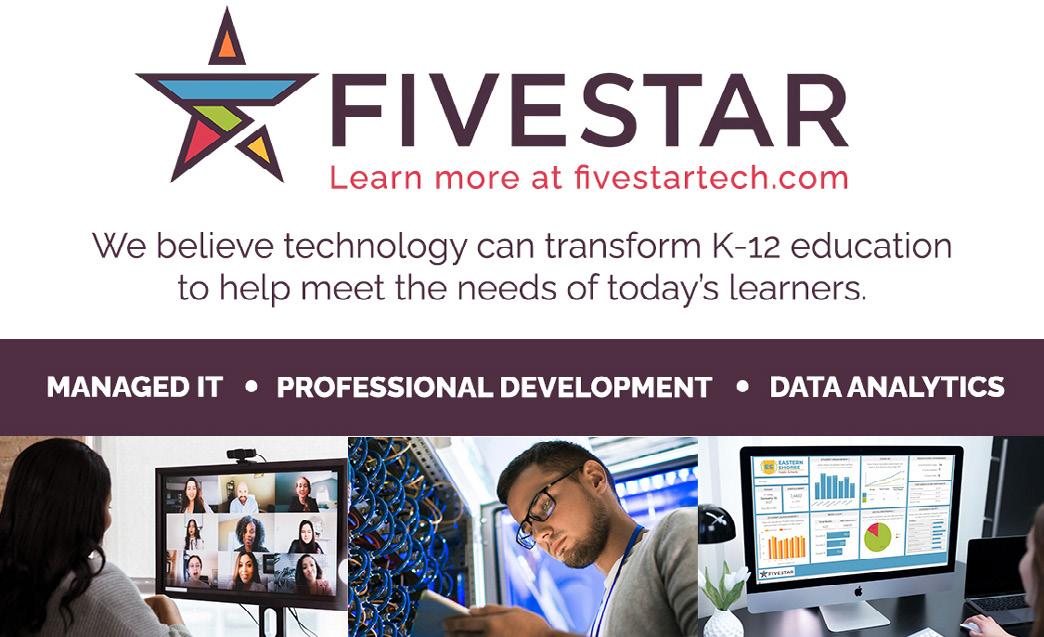
Join us at the conference on Monday, November 21,2022 at 3:30 for IASP’s Lightning Rounds! Five different presenters will share their content for five minutes each in this fast-paced format to energize and uplift you. Don’t miss the Lightning Rounds and get recharged!
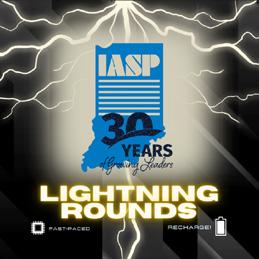





Horace Mann auto
Horace Mann